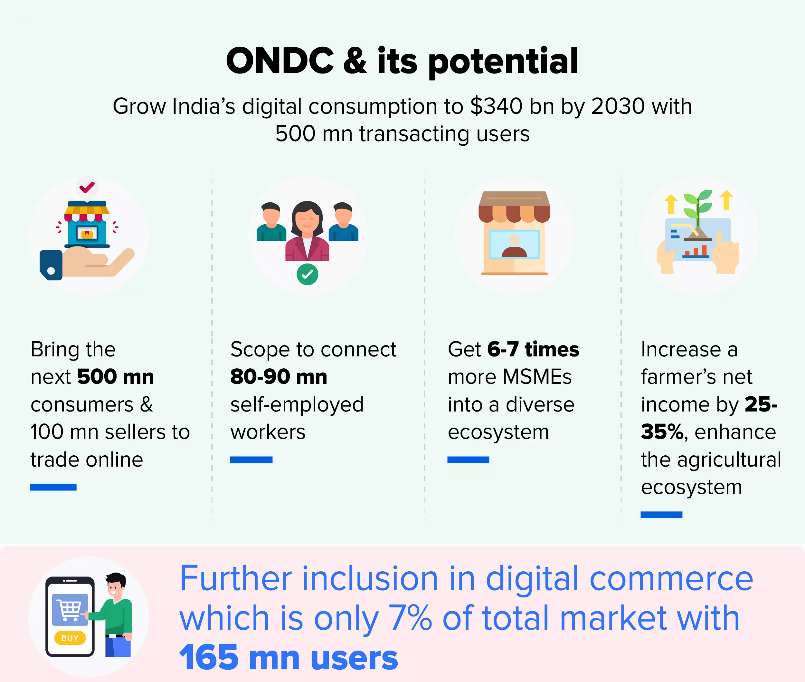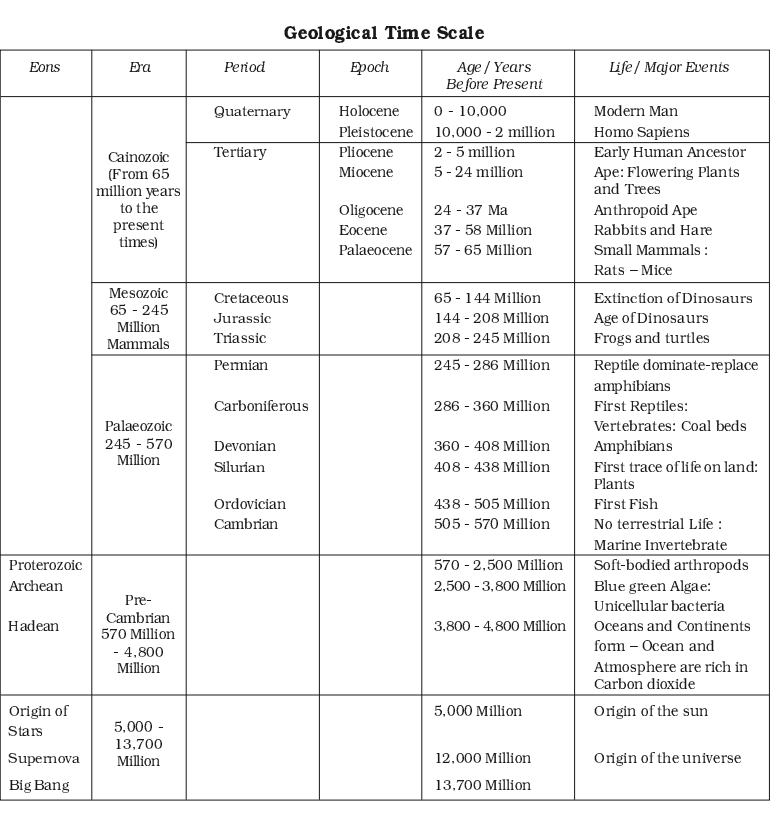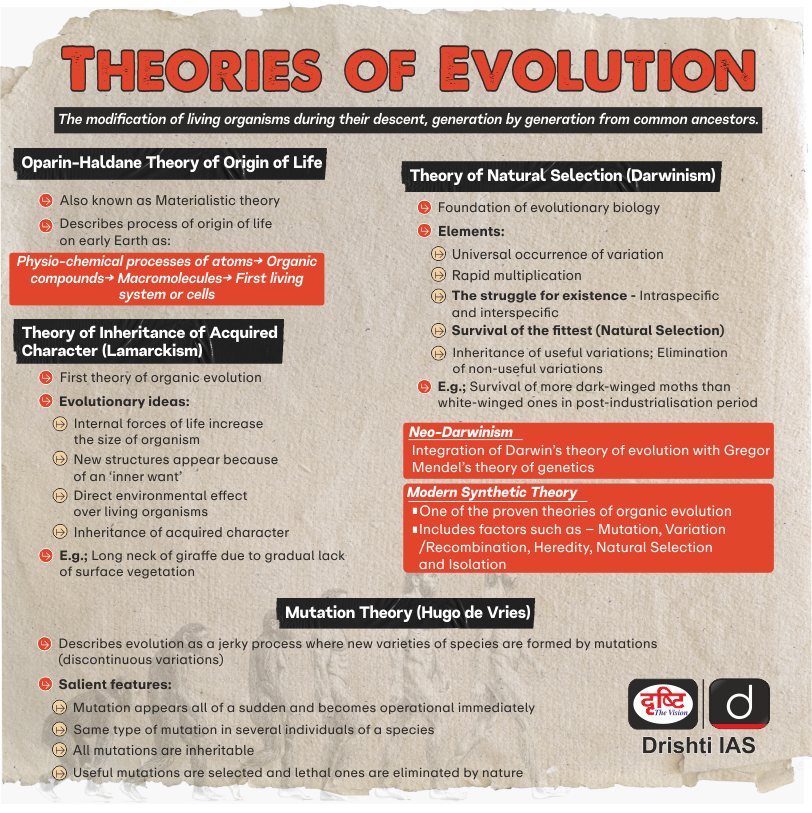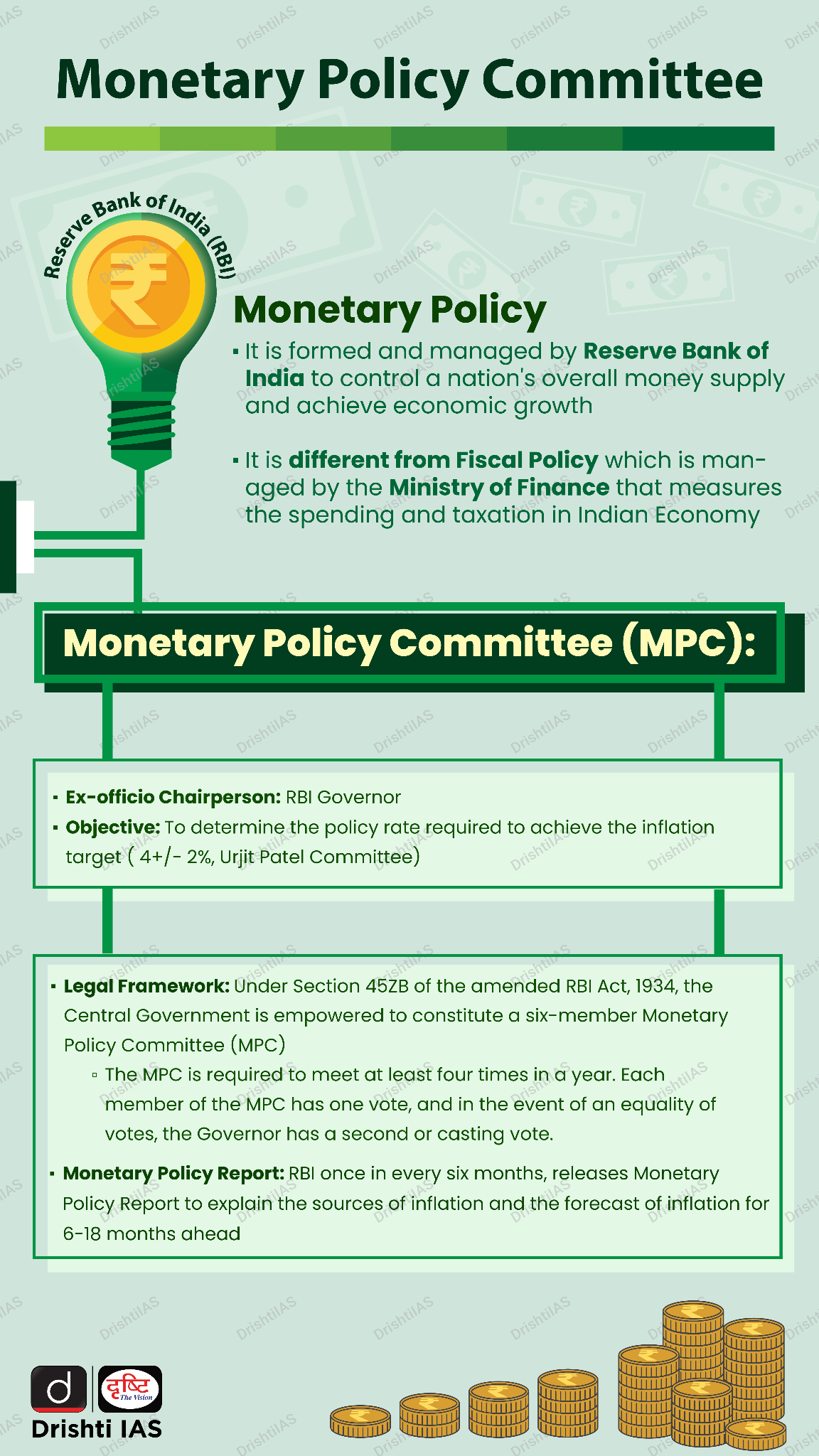Indian Economy
RBI’s Repatriation of Gold from UK to India
For Prelims: Forex and Gold reserve with RBI, Bank of International Settlements (BIS), IMF.
For Mains: India’s forex reserve and the role of the central bank in its management.
Why in News?
Recently, the Reserve Bank of India (RBI) has undertaken a significant strategic move by bringing back over 100 tonnes of gold from the UK to its domestic vaults.
- This has marked the largest such repatriation since the early 1990s and signifies the RBI's evolving approach to managing its gold reserves.
Note
- During the 1990-91 foreign exchange crisis, India pledged part of its gold reserves to the Bank of England to secure a USD 405 million loan.
- Although the loan was repaid by November 1991, the RBI chose to keep the gold in the UK for logistical reasons as the gold stored abroad can be easily used for trading, entering into swaps, and earning returns.
- The repatriation of gold reserves has no financial implications for India's GDP, tax collections, or the RBI's balance sheet, as it only involves a change in the storage location of the gold (the total gold asset of the RBI will remain the same).
- There are no customs or GST implications associated with this transfer, as the gold being repatriated is already owned by India.
How Much Gold Does RBI Have?
- Gold Stock:
- The Reserve Bank of India Act, of 1934 provides the overarching legal framework for the deployment of reserves in different foreign currency assets and gold within the broad parameters of currencies, instruments, issuers and counterparties.
- As of the end of March 2024, the RBI held 822.10 tonnes of gold, with 408.31 tonnes stored domestically and the remaining 413.79 tonnes are still held in custody with foreign institutions like the Bank of England and the Bank for International Settlements (BIS).
- According to RBI as of April 2024, the share of gold is USD 54.4 billion in the current forex reserve of India (USD 648.562 billion).
- History of Gold Purchasing:
- According to the World Gold Council, RBI is among the top five central banks that are buying gold.
- RBI purchased 200 tonnes of gold during the global financial crisis in 2009.
- The RBI bought 65.11 tonnes of gold in FY 2022, 34.22 tonnes of gold in FY2023 and 19 tonnes of gold in FY 2024.
Gold Reserves in India
- As per the National Mineral Inventory, total reserves of gold ore in India are estimated at 501.83 million tonnes as of 2015.
- Largest resources of gold ore located in Bihar (44%), followed by Rajasthan (25%), Karnataka (21%), West Bengal (3%), Andhra Pradesh (3%), Jharkhand (2%)
- Karnataka commands around 80% of the nation's total gold output. The Kolar Gold Fields (KGF) in the Kolar district is one of the world's oldеst and deepest gold minеs.
Other Major Buyers of Gold
- People's Bank of China: It remains a significant gold buyer. According to the World Gold Council (WGC) report (released in April 2024), China was the top buyer of gold among central banks in the first quarter of 2024.
- Central Bank of Turkey: As of April 2024, the Central Bank of Turkey had purchased the most gold (8 tonnes) year-to-date, bringing its total holdings to 578 tonnes.
- Emerging Market Economies: The WGC report consistently highlights that central banks from emerging economies are leading the gold-buying trend.
Why did the RBI Decide to Move the Gold Back to India?
- Protection Against Inflation:
- When inflation is high, gold tends to hold its value well. Unlike currencies that can lose purchasing power due to inflation, gold's historical performance suggests it can even appreciate in price during these times.
- This provides the RBI with the potential for good returns even in challenging economic situations.
- Hedge Against Geopolitical Uncertainty:
- The current geopolitical climate, with events like the Russia-Ukraine war which has triggered a wave of sanctions on Russia by Western nations, leading to the freezing of Russian assets held abroad might have caused some concern for the RBI to control its assets by moving them in their own wallets.
- Gold is also seen as a safe haven during such uncertainties.
- The current geopolitical climate, with events like the Russia-Ukraine war which has triggered a wave of sanctions on Russia by Western nations, leading to the freezing of Russian assets held abroad might have caused some concern for the RBI to control its assets by moving them in their own wallets.
- Diversification and Liquidity:
- Including gold in its reserves allows the RBI to diversify its foreign exchange holdings.
- Gold is a secure and liquid asset (can be easily bought and sold on the international market at a transparent price).
- This provides the RBI with flexibility and additional options for managing its reserves.
- Strength and Confidence:
- It will show India's robust economic growth and its ability to safeguard its financial assets and indicate confidence in the Indian economy's stability.
- This contrasts with the 1991 economic crisis when India had to pledge gold reserves for foreign currency.
- Storage Charges:
- Bringing the gold back eliminates storage costs paid to the Bank of England.
What is the Significance of Gold in the Economy?
- Limited Supply & Intrinsic Value: Unlike currencies that can be printed at will by central banks, gold has a finite supply due to geological limitations.
- This scarcity, combined with its unique physical properties and historical significance, gives gold intrinsic value.
- Hedge Against Inflation:
- Gold has historically performed well during inflation by holding its value well. A 2023 World Gold Council study found a positive correlation between gold prices and US inflation over 50 years. This makes gold valuable for hedging against inflation.
- Diversification & Stability:
- Gold diversifies a country's foreign reserves, reducing dependence on a single currency and offering stability during economic challenges.
- Additionally, holding gold reserves can be seen as a sign of confidence in a country's economy by international investors.
- Jewelry & Cultural Significance:
- The demand for gold in jewellery remains strong globally, particularly in certain regions like India and China.
- Additionally, gold holds cultural significance in many societies, further influencing its value and demand.
Historical Regime of Exchange Rate Management
- The Gold Standard (1870-1914):
- Currencies were directly tied to the value of gold. Each country held gold reserves to back their currency.
- Stable exchange rates made international trade easier and predictable.
- Drawbacks:
- Limited gold supply made it difficult to expand the money supply to meet economic growth.
- Countries lost gold reserves when they had trade deficits, which could hurt their economies.
- Gold discoveries or losses could cause sudden fluctuations in exchange rates.
- The Bretton Woods System (1944-1971):
- It was established after World War II, and aimed to create a more stable and predictable international financial system.
- Key Feature:
- Fixed exchange rates with the US dollar as the reserve currency.
- Other currencies were pegged to the dollar at a fixed rate.
- The US dollar was, in turn, convertible to gold at a fixed price of USD 35 per ounce.
- Challenges:
- The Triffin Dilemma: As the global economy grew, the US couldn't keep up its gold reserves to support the system.
- The US running trade deficits created doubts about its ability to maintain the gold peg.
- The Current Scenario (Multiple Regimes - Post-1971):
- Market forces of supply and demand determine exchange rates with variety of regimes.
- Floating and Fixed Exchange Rates
- Pegged Rates: A country ties its currency to a single strong currency (e.g., USD) or a basket of currencies.
- Dollarization: Some countries completely abandon their own currency and adopt the US dollar (e.g., Ecuador). Eliminates exchange rate risk but gives up control over monetary policy.
- Market forces of supply and demand determine exchange rates with variety of regimes.
- Special Drawing Rights (SDRs):
- Special Drawing Rights (SDRs) was created by the IMF as a supplement to gold reserves. It's a basket of major currencies, not directly convertible to gold.
- Price of gold is determined by supply and demand in the free market, not by its connection to currencies.
Conclusion
The RBI's decision to repatriate over 100 tonnes of gold from the UK to its domestic vaults is a significant strategic move. It reflects the central bank's focus on logistical efficiency, diversified storage, and confidence in the Indian economy's stability. This action aligns with global trends among central banks, as they seek to enhance the security of their foreign exchange reserves during uncertain times.
|
Drishti Mains Question: Discuss the rationale behind the Reserve Bank of India's (RBI) increased holding of gold reserves. Also, evaluate the importance of gold reserves for macroeconomic stability in the context of India's growing economy. |
UPSC Civil Services Examination, Previous Year Questions (PYQs)
Prelims:
Q. What is/are the purpose/purposes of Government’s ‘Sovereign Gold Bond Scheme’ and ‘Gold Monetization Scheme’? (2016)
- To bring the idle gold lying with Indian households into the economy.
- To promote FDI in the gold and jewellery sector.
- To reduce India’s dependence on gold imports.
Select the correct answer using the code given below:
(a) 1 only
(b) 2 and 3 only
(c) 1 and 3 only
(d) 1, 2 and 3
Ans:(c)
Q. Which one of the following groups of items is included in India’s foreign-exchange reserves? (2013)
(a) Foreign-currency assets, Special Drawing Rights (SDRs) and loans from foreign countries
(b) Foreign-currency assets, gold holdings of the RBI and SDRs
(c) Foreign-currency assets, loans from the World Bank and SDRs
(d) Foreign-currency assets, gold holdings of the RBI and loans from the World Bank
Ans: (b)
Q. Indian Government Bond Yields are influenced by which of the following? (2021)
- Actions of the United States Federal Reserve
- Actions of the Reserve Bank of India
- Inflation and short-term interest rates
Select the correct answer using the code given below.
(a) 1 and 2 only
(b) 2 only
(c) 3 only
(d) 1, 2 and 3
Ans: (d)

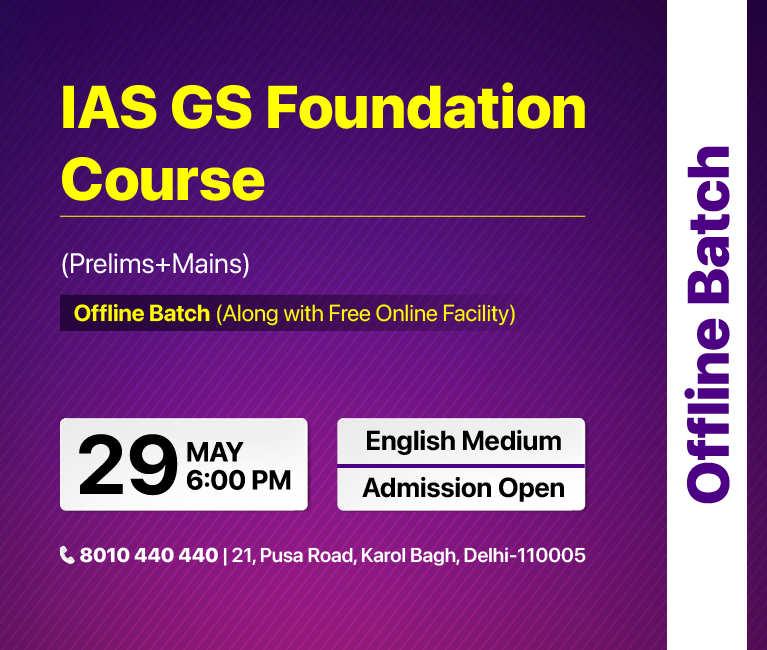
International Relations
Rise of Minilateralism
For Prelims: Indo-Pacific, Squad, World Trade Organization (WTO), forum-shopping, Trans-Pacific Partnership (TPP), Regional Comprehensive Economic Partnership (RCEP), Quadrilateral Security Dialogue (Quad), Trilateral Cooperation and Oversight Group (TCOG)
For Mains: Chinese aggression, Indo-Pacific, World Trade Organization (WTO), Quadrilateral Security Dialogue (Quad), Multilateralism, Global order, Importance and Challenges of Minilateralism
Why in News?
Recently, the rise of Chinese aggression in the Indo-Pacific region has prompted the formation of the Squad highlighting the growing importance of “minilateralism.”
- A squad is a multilateral group consisting of the US, Japan, Australia, and the Philippines.
What is Minilateralism?
- About:
- Minilaterals refer to informal and more targeted initiatives intended to address specific threats, contingencies, or security issues with a small number of states (usually three or four) sharing the same interest in resolving it within a finite period.
- These arrangements focus on a specific purpose rather than broad inclusivity without a permanent or formal institutional structure.
- Outcomes and commitments within minilaterals are non-binding and voluntary, relying on the willingness of the participating states.
- Reasons for Rise of Minilateralism:
- The evolving global order and the changing nature of threats have posed challenges to the continued relevance of multilateral frameworks in resolving local conflicts and issues.
- The inconsistency in US global leadership and the rise of a multipolar world, along with geopolitical rivalry between the US and China, have highlighted fissures in multilateral organisations.
- For instance, the UN Security Council's permanent membership reflects outdated power structures and ineffectiveness.
- Global institutions like the World Trade Organization (WTO) have struggled to reach consensus on complex issues due to diverse memberships and conflicting priorities.
- Global problems can have regional variations. Minilateral organizations can tailor solutions to the needs of a smaller group facing a particular challenge.
- The improvement of information and communications technology has facilitated the growth of minilaterals.
- Informal communication methods have made it easier for states to engage in flexible and targeted cooperation, supporting the growth of minilateralism.
- The fallout of the Covid-19 pandemic has further driven the emergence of strategic minilaterals and targeted ones focused on various issues, including supply chain resilience.
- Example, India set up an electronic platform to help member countries of the South Asian Association for Regional Cooperation (SAARC) to fight the Covid-19 pandemic.
- Contrast with Multilateralism:
- Multilateralism involves a formal effort by three or more states to build trust and avoid conflict through the institutionalisation and observation of rules and norms for a common vision of regional or international order.
- Multilateral frameworks, such as the World Trade Organization (WTO), emphasise broad and inclusive participation, unlike the more focused and flexible nature of minilaterals.
- Contrast with Regional Organisations:
- Minilateralism focuses on urgent, specific issues and forms flexible, ad-hoc coalitions, like the Quad for Indo-Pacific security and economic concerns.
- Regional organizations address a broad range of issues, including economic integration and security, through structured and formal cooperation, such as the European Union (EU).
Squad and QUAD
- Formation and Role of the 'Squad':
- To enhance the Philippines' maritime security, defense ministers from the US, Japan, Australia, and the Philippines convened in Hawaii to discuss advancing maritime cooperation. This new grouping has been informally named 'Squad'.
- It aims to strengthen collaborative efforts to counter Chinese aggression in the South China Sea (SCS).
- This formation is particularly significant given the physical confrontations between Chinese and Philippine forces, which have heightened tensions and prompted calls for proportional countermeasures by the Philippines.
- Comparison with the Quad:
- The Quad, comprising the US, Japan, Australia, and India, aims to ensure a secure and stable Indo-Pacific broadly, while the 'Squad' specifically addresses the security dynamics in the SCS.
What are the Advantages of Minilaterals?
- Minilaterals allow countries with shared interests and values to bypass stagnant frameworks and resolve issues of common concern. For example, the Bangladesh-Bhutan-India-Nepal (BBIN) Motor Vehicles Agreement (MVA) was conceived even the SAARC failed to facilitate a similar initiative.
- Minilaterals provide a flexible and modular approach to international cooperation. They can be formed quickly to address specific issues and are not bound by the extensive formalities of multilateral frameworks.
- This flexibility is evident in trade agreements like the Trans-Pacific Partnership (TPP) and the Regional Comprehensive Economic Partnership (RCEP), which were concluded as minilateral agreements.
- The voluntary and non-binding nature of minilaterals allows for rapid decision-making and adaptation to changing circumstances.
- Minilaterals facilitate the creation of issue-specific partnerships and strategic alliances, particularly in regions like the Indo-Pacific.
- Examples include the Quadrilateral Security Dialogue (Quad) and the Trilateral Cooperation and Oversight Group (TCOG), which address regional security concerns more effectively than larger, more formal organisations.
- In case of disasters, regional minilateral forums can promptly come to the rescue of affected nations.
- For example, India has sent the Indian Naval Ship (INS) Kesari, carrying food items and medical assistance teams, to countries in the southern Indian Ocean to deal with Covid-19 pandemic as part of a Mission Sagar initiative.
What are the Issues Associated With Minilateralism?
- Minilaterals can lead to forum shopping, undermining critical international organisations, and reducing accountability in global governance.
- By promoting voluntary commitments rather than legally binding ones, minilaterals may weaken the enforcement of international norms and standards.
- Preference for minilaterals may reduce the incentive for countries to engage with multilateral frameworks.
- This can impact the relevance and effectiveness of organizations like the World Health Organization (WHO) and the United Nations Children's Fund (UNICEF), which rely on multilateral cooperation for their programs.
- Minilateral success often depends on leadership, political will, and bilateral relations among members.
- Changes in political leadership or strained relations can derail minilateral initiatives, as seen with the initial failure of the Quad due to leadership changes in Japan and Australia.
- Minilateral alliances may have negative impacts on countries not part of the negotiations, reducing their incentive to engage with existing multilateral efforts.
- This was observed in the Doha trade negotiations, where the focus on plurilateral initiatives hindered broader multilateral progress.
Note
- Forum shopping happens when people choose specific groups where they can push their policies forward, based on the favourable rules or characteristics of those places.
Way Forward
- Integration with Multilaterals: Minilateralism should supplement rather than undermine the work of larger multilateral organisations.
- For example, in climate action, minilateralism can facilitate cooperation on renewable energy technologies and engage sub-national and non-government actors to develop innovative solutions.
- For example, the International Solar Alliance (ISA) is an action-oriented, member-driven, collaborative platform for increased deployment of solar energy technologies.
- Forward-Looking Perspectives: A forward-looking approach is essential to understand how minilaterals will impact security and strategic outcomes in various regions.
- Ensuring plurality and diversity in minilateral institutions can help accommodate different groupings' needs, and address issues of shared interest.
- For example, under Security and Growth for All in the Region (SAGAR) India seeks to deepen economic and security cooperation with its maritime neighbours and assist in building their maritime security capabilities.
- Clear Objectives: To maximise their effectiveness, minilateralism should set concrete and measurable objectives.
- This approach will enhance their role as a tool of diplomacy and help streamline negotiations before multilateral platforms.
- The rise of the 'Squad' and similar minilateral groupings highlights a strategic adaptation to the evolving security landscape in the Indo-Pacific.
|
Drishti Mains Question: Q. Assess the relevance of minilateralism in contemporary global governance. Discuss its advantages and limitations. |
UPSC Civil Services Examination, Previous Year Question (PYQ)
Prelims:
Q. In which one of the following groups are all the four countries members of G20? (2020)
(a) Argentina, Mexico, South Africa and Turkey
(b) Australia, Canada, Malaysia and New Zealand
(c) Brazil, Iran, Saudi Arabia and Vietnam
(d) Indonesia, Japan, Singapore and South Korea
Ans: (a)
Q. Consider the following statements: (2016)
- New Development Bank has been set up by APEC.
- The headquarters of the New Development Bank is in Shanghai.
Which of the statements given above is/are correct?
(a) 1 only
(b) 2 only
(c) Both 1 and 2
(d) Neither 1 nor 2
Ans: (b)
Mains:
Q. What do you understand by ‘The String of Pearls’? How does it impact India? Briefly outline the steps taken by India to counter this. (2013)


Science & Technology
Role of Nuclear Technology in Global Food Safety
For Prelims: Food irradiation, Nuclear energy, Food and Agriculture Organization (FAO) International Atomic Energy Agency (IAEA) , nuclear technologies, Polymerase Chain Reaction (PCR), intellectual property rights
For Mains: Significance of Nuclear Energy in the food and processing sector.
Why in News?
Recently, an International Symposium on "Safe Food for a Better Life", jointly organised by the Food and Agriculture Organisation (FAO) and the International Atomic Energy Agency (IAEA) emphasised the importance of nuclear technologies for measuring, managing and controlling food safety.
- Furthermore, the symposium highlighted the potential use of nuclear technology in ensuring food security.
What is the Application of Nuclear Technology on the Food Safety Standard?
- Complementary to One Health Approach:
- The One Health approach recognises the interconnectedness of human, animal, and environmental health; nuclear techniques can be used to detect and monitor contaminants, pathogens, and toxins in food and the environment.
- Polymerase Chain Reaction (PCR) tests is a molecular nuclear technique, to rapidly detect animal diseases in less than a day.
- Food Irradiation:
- Food irradiation is a process of exposing food to ionising radiation to eliminate harmful bacteria, pathogens, and pests; nuclear technology helps to extend the shelf life of food products and ensure their safety for consumption.
- Stable isotope analysis is a nuclear technique that is used to determine the origin and authenticity of food products and this helps to detect adulteration and verify labelling claims.
- Improved Soil and Water Management:
- Past nuclear fallouts are actually helping scientists when it comes to measuring and assessing soil erosion, radioactive nuclides left behind after nuclear events can help scientists determine the health of soils and rate of erosion.
- Pest Control:
- Nuclear techniques, such as the Sterile Insect Technique (SIT), are used for pest control in agricultural production systems.
- This technique limits reproduction and suppresses insects and pests, thereby reducing the need for chemical pesticides, which can negatively impact food safety.
- Plant Breeding and Genetics:
- Nuclear technology applied in crop breeding facilitates the development of enhanced varieties capable of adapting to climate change.
- By subjecting seeds to irradiation by gamma rays, X-rays, ions, or electron beams, genetic alterations are initiated, expanding the genetic diversity available for breeding purposes.
What is the Need for Tech-Related Advancements in Food Security?
- Climate Change: Climate-induced challenges such as droughts, floods, and temperature fluctuations, can adversely affect crop production and food availability so climate-smart agriculture (CSA) needs to be promoted.
- Food Waste: According to the FAO, roughly 1/3rd of food produced for human consumption is lost or wasted globally, which amounts to about 1.3 billion tons per year and approximately 3.1 billion people could not afford a healthy diet in 2020 (FAO, 2022).
- Increasing Population: The world's population is projected to reach 9.7 billion by 2050 (UN World Population Prospects, 2019), putting immense pressure on food production systems, thereby technological advancement is required.
- Limited Resources: With limited arable land and freshwater resources, technology can help maximise productivity through vertical farming, hydroponics, and efficient irrigation systems.
Note:
- Atoms 4Food is a joint initiative of the International Atomic Energy Agency (IAEA) and the FAO to tackle global hunger and enhance food security.
- It was showcased at the 2023 World Food Forum in Rome.
- This project aims to leverage nuclear processes and cutting-edge technologies, tailoring solutions to address the specific needs of different countries.
- These technologies are employed to boost agricultural and livestock productivity, manage natural resources more effectively, reduce food losses, ensure food safety standards, improve nutritional value, and mitigate the challenges posed by climate change.
- The Joint FAO/IAEA Centre of Nuclear Techniques in Food and Agriculture assists in safe and effective application of nuclear technologies for global food security and sustainable agricultural development.
What Challenges are Associated with using Nuclear Technology for Food Safety?
- Geographical and Regional Variations:
- Diverse agro-climatic regions and farming practices, can pose challenges in the uniform application and adaptation of nuclear techniques across the globe.
- The application of isotopic techniques for soil and water management may require region-specific calibration and adaptation due to variations in soil types, climatic conditions, and irrigation practices.
- Limited Funding and Investment and Technology:
- The development of irradiation facilities for food preservation and pest control requires significant capital investment, which may be a challenge due to budget constraints.
- Accessing advanced techniques like accelerator-based mutation breeding or specialised analytical equipment for food traceability may be difficult due to technology transfer restrictions or high costs.
- Regulatory Challenges:
- The use of nuclear technology in agriculture is subject to strict regulations and guidelines to ensure safety and security obtaining necessary approvals, licences, and compliance with regulatory requirements can be a lengthy and complex process.
- Various factors, including intellectual property rights and technology transfer barriers, hinder the adaptation.
- Lack of Allied Infrastructure:
- Lack of specialised laboratories and research facilities, to effectively utilise nuclear techniques in agriculture and shortage of trained personnel and expertise in this field, limiting the widespread application of these techniques.
What is Nuclear Energy?
- It is a form of energy released from the nucleus or core of atoms.
- It is known for its high energy density, meaning a small amount of nuclear fuel can produce a large amount of energy.
- There are two primary methods for harnessing nuclear energy:
- Nuclear Fission: This process involves splitting the nucleus of an atom into two smaller nuclei, releasing a large amount of energy.
- Nuclear power plants primarily use this method, utilising uranium-235 or plutonium-239 as fuel. When the nuclei of these heavy isotopes are bombarded with neutrons, they become unstable and split into smaller nuclei, releasing additional neutrons.
- This chain reaction generates significant heat, which is used to produce steam, drive turbines, and ultimately generate electricity.
- Nuclear Fusion: This process involves combining the nuclei of two light atoms to form a heavier nucleus, which is the process that powers the sun and other stars.
- While nuclear fusion holds great potential for providing clean and virtually limitless energy, achieving controlled nuclear fusion on Earth remains extremely challenging.
What is the Food and Agriculture Organization (FAO)?
- FAO is a specialised agency of the United Nations that leads international efforts to defeat hunger.
- World Food Day is celebrated every year around the world on 16th October to mark the anniversary of the founding of the FAO in 1945.
- With 194 member countries (including India) and the European Union, FAO works in over 130 countries worldwide.
- It is one of the UN food aid organisations based in Rome (Italy). Its sister bodies are the World Food Programme and the International Fund for Agricultural Development (IFAD).
Way Forward
- Developing Infrastructure and Facilities: Allocate funds and resources to set up irradiation facilities, analytical labs, and equipment for nuclear technology, such as a food irradiation facility to preserve perishable produce, reduce losses, and ensure food safety.
- Regulatory Reforms and Streamlining Processes: Create guidelines for the safe handling, transport, and disposal of radioactive agricultural materials and form a regulatory body to oversee the approval and commercialization of radiation-induced mutant crops.
- Promoting Public-Private Partnerships: Promote collaborations between research institutions, the private sector, and the industry for nuclear technology transfer, and offer incentives for companies to invest in developing and commercialising nuclear-based agricultural products.
- International Cooperation and Knowledge Sharing: Foster international collaborations, such as partnering with the Joint FAO/IAEA Centre for expertise and technology transfer.
|
Drishti Mains Question: “Technology has the potential to significantly contribute to the growth and sustainability of Indian agriculture by improving crop yields, farmer incomes, and the ability to withstand challenges faced by the agricultural sector.” Critically analyse. |
UPSC Civil Services Examination Previous Year’s Question (PYQs)
Prelims:
Q. Consider the following statements: (2019)
- According to the Indian Patents Act, a biological process to create a seed can be patented in India.
- In India, there is no Intellectual Property Appellate Board.
- Plant varieties are not eligible to be patented in India.
Which of the statements given above is/are correct?
(a) 1 and 3 only
(b) 2 and 3 only
(c) 3 only
(d) 1, 2 and 3
Ans: (c)
Mains:
Q. What are the present challenges before crop diversification? How do emerging technologies provide an opportunity for crop diversification. (2021)


Indian Economy
Open Network for Digital Commerce
For Prelims: Open Network for Digital Commerce (ONDC), Micro, Small and Medium enterprises (MSMEs), Unified Payments Interface (UPI).
For Mains: Open Network for Digital Commerce (ONDC), its potential, challenges and way forward
Why in News?
Recently, Open Network for Digital Commerce (ONDC) recorded an all-time high of 8.9 million transactions across retail and ride-hailing segments in May 2024, representing a 23% month-on-month increase in total transaction volume.
What is ONDC?
- About:
- Open Network for Digital Commerce (ONDC) is a network of interconnected e-marketplaces through which sellers, including brands, can list and sell their products directly to customers bypassing any middlemen or intermediaries.
- It allows transitioning from a platform-centric model to an open source network for buying and selling goods and services.
- It was launched in 2021 under the Department for Promotion of Industry and Internal Trade (DPIIT) by the Ministry of Commerce as part of the Digital India initiative.
- It offers delivery services for groceries, home decor, cleaning essentials, food delivery and other products.
- It is a not-for-profit organisation that provides a network enabling local digital commerce stores across various industries to be discovered and engaged by any network-enabled applications.
- Similar to the Unified Payments Interface (UPI), ONDC aims to level the operational playing field among e-commerce platforms.
- The Quality Council of India has been tasked with integrating e-commerce platforms through this open-source technology network, allowing users to modify, enhance, or improve the original code.
- Open Network for Digital Commerce (ONDC) is a network of interconnected e-marketplaces through which sellers, including brands, can list and sell their products directly to customers bypassing any middlemen or intermediaries.
- Objectives:
- Democratisation and decentralisation of e-Commerce
- Inclusivity and access for sellers, especially small and medium enterprises as well as local businesses
- Increased choices and independency for consumers
- Making goods and services cheaper.
- Working Mechanism:
- ONDC functions on the basis of an open network where it will not be a single platform similar to Amazon or Flipkart but rather in the form of a gateway where buyers and sellers across different platforms will be able to connect.
What is Open Source?
- Open source implies that the technology or code deployed for the process is freely made available for everyone to use, redistribute, and modify.
- For instance, the operating system of iOS is closed source, it cannot be legally modified or used.
- Whereas, the android operating system is open source, making it possible for smartphone manufacturers, such as Samsung, Nokia, Xiaomi, etc., to modify it for their respective hardware.
What are the Potential Advantages of ONDC?
- Empowering Consumers: ONDC fosters a more transparent environment by potentially increasing access to information.
- This empowers consumers to make informed choices and benefit from a wider array of sellers, potentially leading to lower prices.
- Boosting Competition: By breaking down the dominance of existing platforms, ONDC creates a level playing field. This incentivizes competition among sellers, ultimately translating into a wider variety of products and potentially lower prices for consumers.
- Innovation: The open-source architecture of ONDC fosters innovation.
- Cost Efficiency: ONDC's decentralised structure has the potential to streamline operations and reduce redundancies and lead to significant cost savings.
- Boosting Small Businesses: ONDC removes entry barriers for small and medium-sized enterprises (MSMEs) and local vendors. This paves the way for greater participation in the digital marketplace, fostering a more inclusive e-commerce ecosystem.
What are the Challenges to ONDC?
- Complexity Factor: Compared to user-friendly systems like UPI, ONDC's underlying mechanisms are intricate. The ease of adoption witnessed with UPI might not be easily replicated with ONDC.
- Breaking Established Habits: Consumers are accustomed to the existing e-commerce platforms' user interfaces and functionalities. ONDC will need to provide a seamless and user-friendly experience to compete effectively.
- Dispute Resolution Concerns: Unlike traditional platforms that manage the entire transaction lifecycle, ONDC focuses solely on online buying and selling.
- This separation might lead to an increase in disputes related to deliveries, product quality, or after-sales service, as ONDC doesn't function as a direct intermediary.
- Lack of a Robust Grievance Redressal Mechanism: The lack of clarity on responsibility for customer service and handling complaints may deter people from joining the platform.
- Challenges from Existing E-commerce Platforms: Existing e-commerce giants have fostered strong relationships with consumers through loyalty programs, bundled services, and other incentives.
- ONDC will need to develop compelling strategies to attract and retain customers in this competitive landscape.
- Price Advantage Uncertainty: As a facilitator, ONDC might not be able to directly influence product pricing or offer discounts on the scale of established players who leverage bulk deals and partnerships.
Note
The Nandan Nilekani committee, formed by the Department for Promotion of Industry and Internal Trade (DPIIT), recommended the following for the ONDC:
- Open Network Protocols: Establish open protocols for digital commerce operations.
- Interoperability: Ensure seamless interaction across different platforms.
- Standardisation: Develop uniform standards for e-commerce.
- Decentralisation: Reduce reliance on a few large platforms to foster competition.
- Inclusivity: Make the network accessible to small and medium enterprises.
- Transparency and Security: Ensure data privacy and fair operations.
- Regulatory Framework: Create robust regulations for compliance and consumer protection.
- Capacity Building: Train small businesses to participate effectively.
- Consumer Choice: Expand product and service options through competition.
- Tech-Driven Innovations: Utilize advanced technologies to improve digital commerce.
Way Forward
- Enhancing Digital Infrastructure: The government can play a crucial role in fostering a robust digital infrastructure that supports ONDC.
- This may involve investments in broadband connectivity and initiatives to bridge the digital divide in rural and remote areas.
- Promoting Digital Literacy: A comprehensive digital education policy that caters to diverse regional languages is crucial.
- This will empower both consumers and sellers, particularly small businesses and local vendors, to navigate the ONDC platform effectively. User-friendly interfaces that prioritise ease of use will further enhance adoption.
- Targeted Outreach Programs: Extensive outreach programs with adequate funding are necessary to attract and onboard small sellers, especially micro, small, and medium enterprises (MSMEs) and kirana stores.
- Incentives and handholding support can be instrumental in overcoming initial hurdles and promoting platform adoption.
- Dispute Resolution Framework: Establishing a secure and efficient single window mechanism for addressing issues like information asymmetry, opaque pricing, quality concerns, and buyer-seller disputes is essential.
- This will build trust and confidence among stakeholders in the ONDC ecosystem.
Conclusion
The success of ONDC hinges on a collaborative effort between the government, industry players, and civil society.
By prioritising digital infrastructure development, promoting digital literacy, facilitating seller onboarding, and establishing a robust grievance redressal mechanism, ONDC can usher in a new era of inclusivity, transparency, and competition in the Indian e-commerce landscape.
|
Drishti Mains Question: Discuss the potential of Open Network for Digital Commerce (ONDC) in the Indian e-commerce landscape. Discuss the key challenges it faces and suggest a roadmap for its successful implementation. |
UPSC Civil Services Examination, Previous Year Question (PYQ)
Q. With reference to ‘Quality Council of India (QCI)’, consider the following statements: (2017)
- QCI was set up jointly by the Government of India and the Indian Industry.
- Chairman of QCI is appointed by the Prime Minister on the recommendations of the industry to the Government.
Which of the above statements is/are correct?
(a) 1 only
(b) 2 only
(c) Both 1 and 2
(d) Neither 1 nor 2
Ans c
Q. Consider the following: (2022)
- Aarogya Setu
- CoWIN
- DigiLocker
- DIKSHA
Which of the above are built on top of open-source digital platforms?
(a) 1 and 2 only
(b) 2, 3 and 4 only
(c) 1, 3 and 4 only
(d) 1, 2, 3 and 4
Ans: (d)

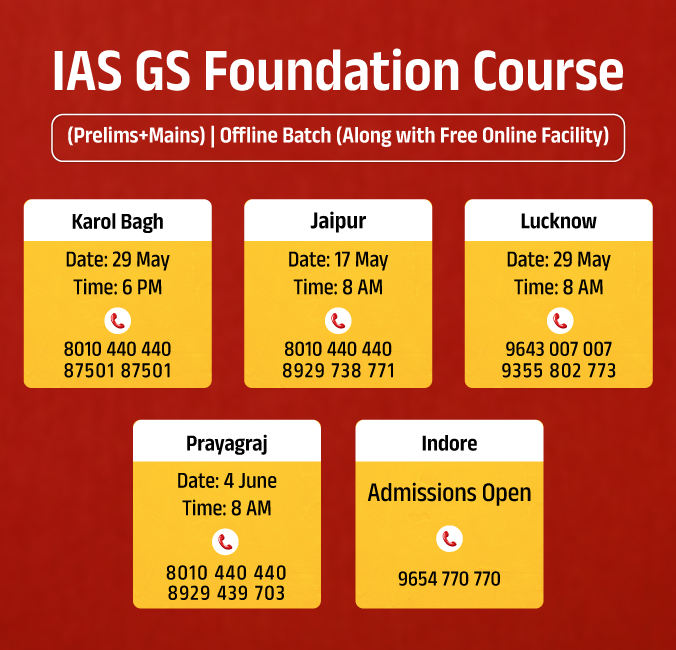
Important Facts For Prelims
Earth Habitable 4 Billion Years Ago
Why in News?
Recently, analyses of ancient rocks and minerals revealed that Earth may have had the necessary conditions to support life around 600 million years after its formation, with fresh water and dry land present as far back as 4 billion years ago.
What are the Key Highlights of the Recent Study?
- Water Cycle and Life Emergence: The interaction between freshwater and land, referred to as the water cycle might have created conditions conducive to life.
- This interaction was previously believed to have started around 3.5 billion years ago based on fossil evidence.
- A study of oxygen isotopes in ancient rocks reveals the origins of Earth's water cycle.
- It suggests fresh water and land interactions occurred several kilometres below the Earth’s surface, challenging the theory that Earth was completely covered by ocean four billion years ago.
- Implications for Early Life: These findings indicate that the conditions for life to flourish existed relatively early in Earth's history.
What are the Key Facts About Origin of Earth?
- Age of Earth: While Earth is estimated to be around 4.5 billion years old, the study suggests that fresh water and dry land were present as far back as 4 billion years ago.
- Theories Related to the Origin of Earth:
- Nebular Hypothesis: It was given by Immanuel Kant and revised by Laplace.
- It considered that the planets were formed out of a cloud of material associated with a youthful sun, which was slowly rotating.
- In 1950, Otto Schmidt in Russia and Carl Weizascar in Germany revised the nebular hypothesis.
- They considered that the sun was surrounded by a solar nebula containing mostly hydrogen, helium, and dust.
- The friction and collision of particles led to the formation of a disk-shaped cloud and the planets were formed through the process of accretion.
- Big Bang Theory: It was given by Edwin Hubble, in 1920. It is the idea that the universe began as just a single point, then expanded and stretched to grow as large as it is right now.
- Nebular Hypothesis: It was given by Immanuel Kant and revised by Laplace.
- Evolution Of The Earth:
- Formation of the Lithosphere: Initially, Earth was extremely hot and volatile. As it cooled, heavier elements like iron sank towards the centre, while lighter materials rose to the surface, forming the crust.
- Evolution of Earth's Atmosphere in Three Stages.
- First, the loss of primordial atmosphere.
- Second, the hot interior of the earth contributed to the evolution of the atmosphere. The process through which the gases were outpoured from the interior is called degassing.
- Finally, the atmosphere was modified by the living world through the process of photosynthesis and volcanic activity.
- Development of the Hydrosphere: As Earth cooled, water vapour in the atmosphere condensed and fell as rain, filling the planet's depressions to form oceans.
- Impact of Biological Processes on Atmosphere: Photosynthesis began to flood the atmosphere with oxygen paving the way for more complex life forms that rely on oxygen.
- Origin of Life: A kind of chemical reaction, which first generated complex organic molecules and assembled them.
UPSC Civil Services Examination, Previous Year Question (PYQ)
Prelims:
Q. Which of the following pairs is/are correctly matched? (2008)
Theory/Law Associated Scientist
- Continental Drift : Edwin Hubble
- Expansion of Universe : Alfred Wegener
- Photoelectric Effect : Albert Einstein
Select the correct answer using the code given below:
(a) 2 and 3 only
(b) 3 only
(c) 2 only
(d) 1 only
Ans: (b)


Important Facts For Prelims
QS World University Rankings 2025
Why in News?
Recently, the latest QS World University Rankings for 2025 were released revealing significant improvements for Indian universities and notable global standings.
What are the Key Highlights of the Rankings?
- About:
- QS Quacquarelli Symonds (QS) offers unrivaled data, expertise, and solutions for the global higher education sector.
- For the compilation of the 2025 QS World University Rankings, QS claims to have analysed 17 million research papers, 176 million citations, data from 5,600 institutions worldwide and insights from 175,798 academics and 105,476 employers.
- Top Global Institutes:
- Massachusetts Institute of Technology (MIT): Retained its position as the best institute globally for the 13th consecutive year.
- Imperial College London: Improved from sixth to second.
- Harvard University and University of Oxford: Jointly held the third rank.
- Regional Highlights:
- ETH Zurich: Continues to be the top institution in Continental Europe for the 17th year.
- Asia: The National University of Singapore (NUS) remains a prominent institution, keeping its eighth spot.
- India’s Position:
- In this edition of the rankings, with 46 universities, the Indian Higher Education system is the seventh most represented globally and the third in Asia, trailing only Japan (49 universities) and China (71 universities).
- 61% of Indian universities’ ranking has improved, with IIT Bombay gaining the top spot in India.
- A total of 61% of Indian universities have risen in rank this time, while 24% have maintained their positions.
- Research and Collaboration:
- Citations per Faculty: India’s performance in this indicator is strong, with a score of 37.8, surpassing the global average of 23.5.
- This is the second-highest in Asia among countries with more than 10 ranked universities.
- However, India lags in the International Faculty Ratio and International Student Ratio indicators, underscoring the need for greater international collaboration and exchange
- Citations per Faculty: India’s performance in this indicator is strong, with a score of 37.8, surpassing the global average of 23.5.
- Top Indian Institutes:
- IIT Bombay: Leading in India, IIT Bombay climbed from 149th in 2024 to 118th in 2025.
- IIT Delhi: Achieved the second position in India, moving up 47 ranks from 197th to 150th.
- IIT Indore: The only Indian institute that declined in ranking, dropping from 454th to 477th.
- New Entries: Symbiosis International (Deemed University) entered the top 20, ranked between 641-650 globally.
UPSC Civil Services Examination, Previous Year Question (PYQ)
Prelims:
Q. Which of the following provisions of the Constitution does India have a bearing on Education? (2012)
- Directive Principles of State Policy
- Rural and Urban Local Bodies
- Fifth Schedule
- Sixth Schedule
- Seventh Schedule
Select the correct answer using the codes given below:
(a) 1 and 2 only
(b) 3, 4 and 5 only
(c) 1, 2 and 5 only
(d) 1, 2, 3, 4 and 5
Ans: (d)


Rapid Fire
Living Will and Passive Euthanasia
Recently, a judge serving on the Goa Bench of the Bombay High Court, registered a living will' - an advanced medical directive for his family for when he cannot make his own decisions.
- The background of "Living Wills" can be traced back to the Supreme Court ruling in the case Common Cause vs Union of India (2018).
- In 2018, the SC reaffirmed the right to die with dignity as a fundamental right under Article 21 (passive euthanasia contingent upon ‘living will’).
- Previously in 2011, the SC recognised passive euthanasia in the Aruna Shanbaug case for the first time.
- Passive euthanasia refers to the practice of allowing a person to die by withholding or withdrawing medical treatments that are necessary to maintain life.
- In 2018, the SC reaffirmed the right to die with dignity as a fundamental right under Article 21 (passive euthanasia contingent upon ‘living will’).
- In 2023, the Supreme Court eased the process for passive euthanasia by changing certain existing guidelines for living wills. According to the guidelines, a person who wants to make a “living will" must draft it as per the reference format in the presence of two witnesses.
- The will then has to be duly certified by a gazetted officer or a notary and forwarded to the main Mamlatdar of the taluka, who shall then send it to the nodal officer appointed by the District Collector for safe custody.
Read More: SC Eases Norms for Passive Euthanasia


Rapid Fire
Unified India Organic Logo
The Food Safety and Standards Authority of India (FSSAI) and the Agricultural and Processed Food Products Export Development Authority (APEDA) have jointly developed a “Unified India Organic” logo to replace the India Organic and Jaivik Bharat logos.
- The new logo has been developed to bring uniformity and convergence in the implementation of Indian regulations by the National Programme for Organic Products (NPOP) and FSSAI.
- The India Organic logo was used on organic products complying with the NPOP, while Jaivik Bharat was used on organic products certified by FSSAI.
- The certification bodies will get three months of transition time for implementation which will be given from the date the logo is notified.
- FSSAI is an autonomous statutory body established under the Food Safety and Standards Act, of 2006.
- It is responsible for protecting and promoting public health by regulating food safety and quality in India, operating under the Ministry of Health & Family Welfare.
- APEDA functions under the Ministry of Commerce and Industry and is responsible for export promotion and development of the scheduled products viz. fruits, vegetables and their products etc.
Read more: FSSAI, APEDA, Organic Food Regulatory System in India


Rapid Fire
Repo Rate Unchanged for 8th Consecutive Time
Recently, the Reserve Bank of India (RBI) decided to keep the policy rate unchanged at 6.5% for the eighth consecutive time.
- The Monetary Policy Committee (MPC) will maintain a tight control on inflation and remain watchful of elevated food inflation amid the expectation of a normal monsoon.
- The rate increase cycle was paused in April last year after six consecutive rate hikes, totalling 250 basis points since May 2022.
- The RBI raised the growth projection to 7.2% from an earlier estimate of 7% for the current financial year.
- Inflation targeting in India is a monetary policy framework adopted in 2016, where the Central Government, in consultation with the RBI, sets a target inflation rate once in five years.
Read more: Monetary Policy Committee (MPC)


Rapid Fire
Global Soil Partnership's 12th Plenary Assembly
The Global Soil Partnership (GSP), established in December 2012 to position soils on the Global Agenda and promote inclusive policies and soil governance has initiated a pivotal meeting urging immediate action amid global crises.
- The Food and Agriculture Organization (FAO) of the United Nations hosts the partnership, including FAO Members and over 700 partners.
- The GSP is committed to improving and maintaining the health of at least 50% of the world's soils by 2030, by ensuring sustainable soil management based on the three “Rs”: reduce, re-use, and renew.
- Key Initiatives of GSP:
- VACS Initiative: Under the VACS initiative, FAO is implementing the Soil Mapping for Resilient Agrifood Systems (SoilFER) project in Central America and African countries.
- Other Intiatives: Include Measuring, Reporting, and Verifying soil health, Global Soil Laboratory Network quality certificates, Conservation Agriculture, and the role of healthy soils in agrifood systems transformation.
- Achievements:
- Implementing World Soil Day (5th December)
- International Year of Soils 2015
- Revised World Soil Charter
Read more: World Soil Day



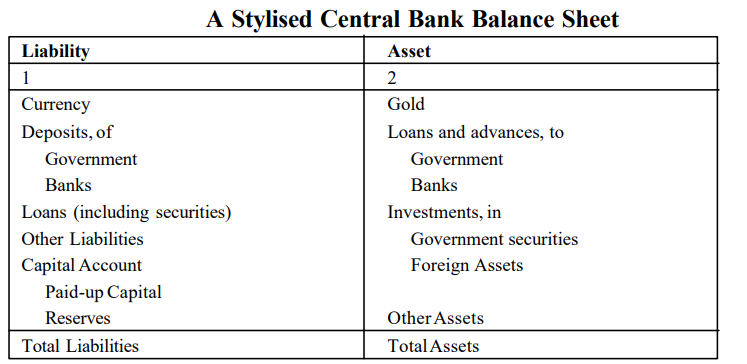
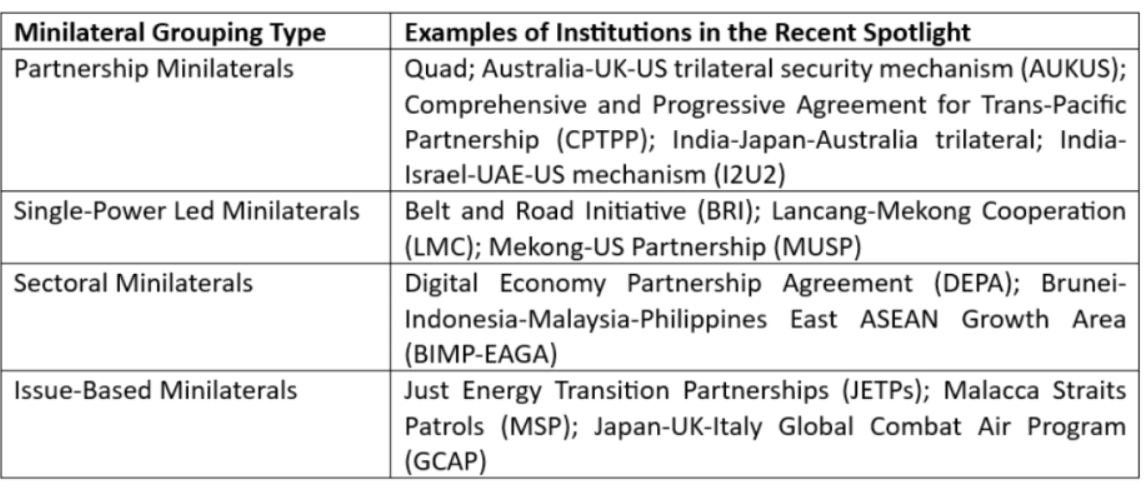
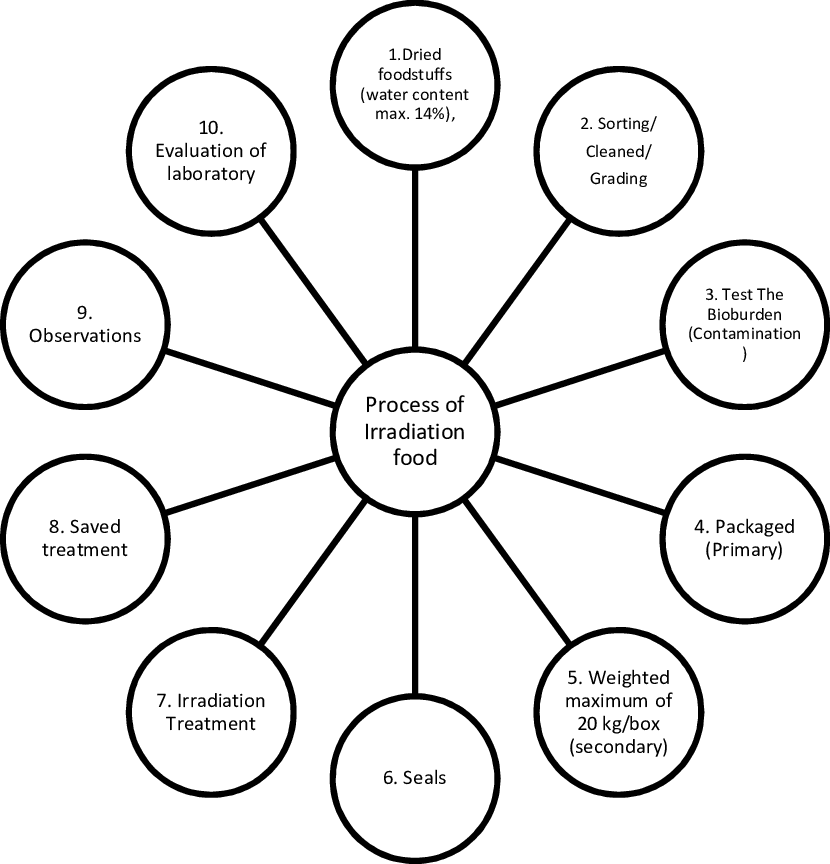

.png)
